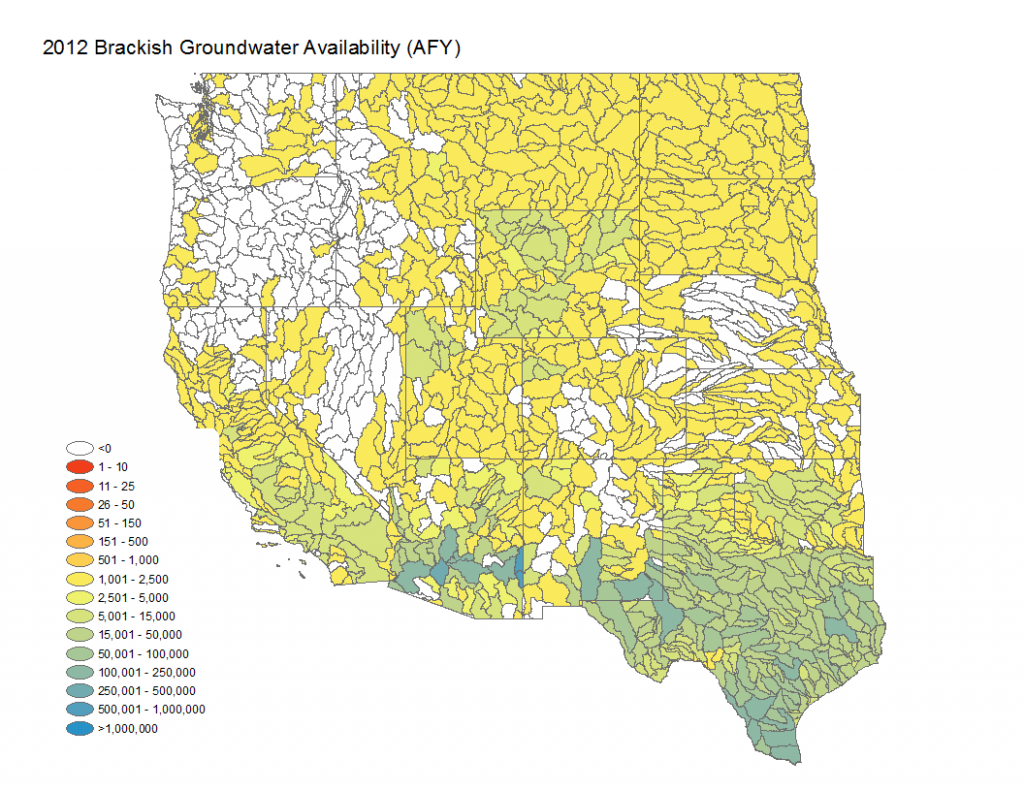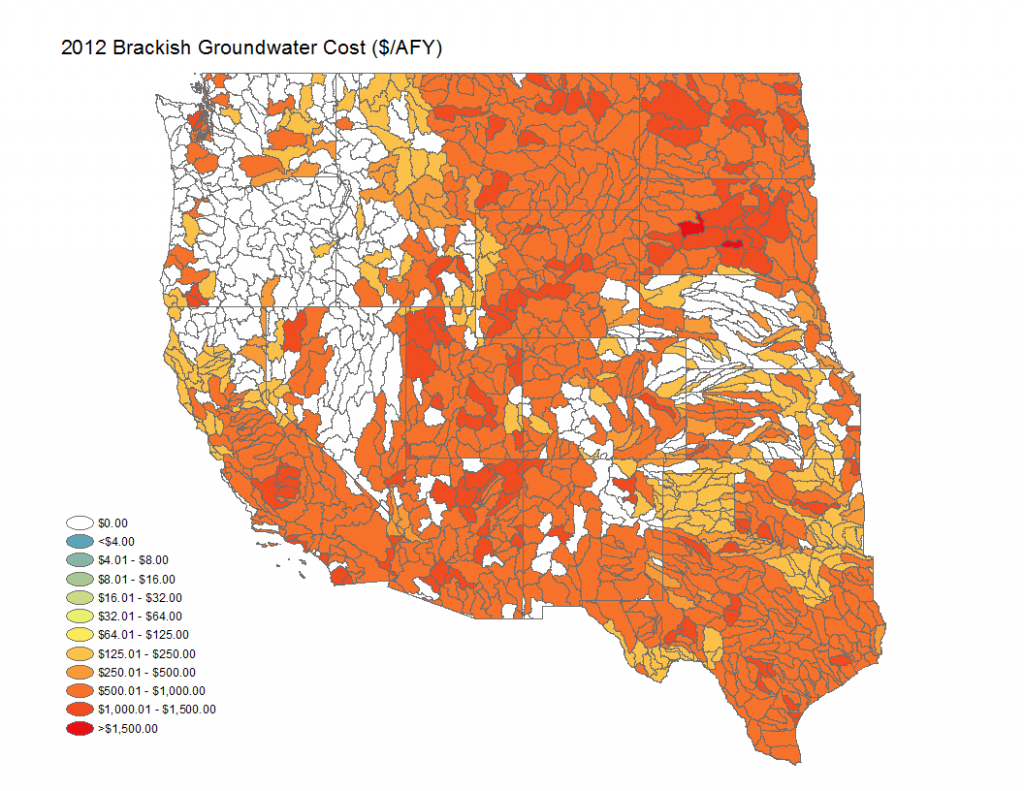Shallow Brackish Groundwater Metric
For this analysis brackish water availability is limited to resources no deeper than 2500 feet and salinity below 10,000 total dissolved solids (TDS). Deeper, more concentrated resources would generally be very expensive to exploit.
Estimates of brackish groundwater resources across the western U.S. are very spotty. To cover this entire area requires use of multiple sources of information. The best quality data are state estimated volumes of brackish groundwater that are potentially develop-able; however, this data is only available for Texas (LBG-Guyton Associates 2003), New Mexico (Huff 2004), and Arizona (McGavock 2009). Most states also apply some type of allowable depletion rule to non-renewable water sources. In this case it is assumed that only 25% of the resource can be depleted over a 100 year period of time (annual available water is determined by multiplying estimated total volume of brackish water by 0.0025).
The next best source of data is reported use of brackish groundwater as published by the U.S. Geological Survey (Kenny et al. 2009). This does not provide a direct measure of available water, simply an indication that brackish water of develop-able quality is present. Conservatively we assume that double the existing use could be developed up to a maximum limit of 10 MGD. Also assumed is that the minimum quantity available is 1 MGD.
Finally, if a watershed has no brackish water volume estimate or brackish water use then the presence of brackish groundwater wells is used. The U.S. Geological Survey maintains the National Water Information System (NWIS) database which contains both historical and real-time data of groundwater well depth and quality (USGS 2011). Where at least one well exists brackish water availability is set to 1MGD. To avoid brackish water that is in communication with potable stream flow, availability is set to zero when the average depth to brackish water is less than 50 ft. and has salinity less than 3000 TDS.

Estimated costs consider both capital and O&M costs to capture and treat the brackish groundwater. Cost calculations follow standards outlined in the Desalting Handbook for Planners (Watson et al. 2003). Capital costs include expenses to drill and complete the necessary groundwater wells and construct a treatment plant utilizing reverse osmosis. Number of wells and treatment plant capital costs are based on the treated volume of water, which is assumed to be 5 MGD. Other key design parameters include the depth of the brackish water and TDS. These data averaged at the 8-digit HUC level, were estimated from the U.S. Geological Survey brackish groundwater well logs (USGS 2011). O&M costs capture expenses for labor, electricity, membranes and brine disposal.
Huff, G.F. 2004. An Overview of the Hydrogeology of Saline Ground Water in New Mexico. Water Desalination and Reuse Strategies for New Mexico, September. New Mexico Water Resources Research Institute. wrri.nmsu.edu/publish/watcon/proc49/huff.pdf.
Kenny, R.F., N.L. Barber, S.S. Hutson, K.S. Linsey, J.K. Lovelace and M.A. Maupin, 2009. Estimated use of water in the United States in 2005, U.S. Geological Survey Circular 1344, 52p.
LBG-Guyton Associates, 2003. Brackish groundwater manual for Texas regional water planning groups: Report prepared for the Texas Water Development Board, available at: www.twdb.state.tx.us.
McGavock, E., 2009. Opportunities for desalination of brackish groundwater in Arizona, Montgomery and Associates, available at: http://www.elmontgomery.net/documents/salinityPoster.pdf.
USGS, U.S. Geological Survey, 2011. National Water Information System, available at: http://water.usgs.gov/nwis.
Watson, I.C., O. Morin and L. Henthorne, 2003. Desalting handbook for planners, 3rd Ed. U.S. Bureau of Reclamation.
To view the sources and processes used to calculate estimates for all metrics, select a state below:
